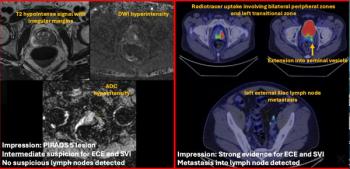
Making the Case for Intravascular Ultrasound Use in Peripheral Vascular Interventions
In a recent interview, Eric Secemsky, M.D., discussed an array of benefits for the use of intravascular ultrasound (IVUS) in supplementing angiography for peripheral vascular interventions, current barriers preventing more widespread adoption of the technology and other salient insights from a recent multidisciplinary roundtable discussion.
Eric Secemsky, M.D. says there can be a fair amount of assumptions and guesswork with sole reliance on angiography to inform peripheral vascular interventions.
For example, an angiogram provides “a very poor understanding” of a significant amount of pathology that occurs on the luminal surface of the vessel, noted Dr. Secemsky in a recent interview. He maintained that intravascular ultrasound can provide greater clarity on this pathology as well as lesion severity and morphology, vessel measurements and where disease segments begin and end.
“These are just a few of the many areas where intravascular imaging catheters can really help augment and support angiography,” noted Dr. Secemsky, the director of vascular intervention and section head of interventional cardiology and vascular research with the Smith Center for Outcomes Research in Cardiology at the Beth Israel Deaconess Medical Center in Boston.
To that end, Dr. Secemsky recently led a multidisciplinary roundtable discussion, comprised of interventional radiologists, interventional cardiologists, and vascular surgeons, to discuss
(Editor’s note: For related content, see “
While acknowledging different practice settings and pressures to turn over rooms for procedures, Dr. Secemsky said the perception that using imaging catheters increases procedure time is a fallacy. Research in the coronary intervention space has demonstrated that increased familiarity with imaging catheters shows no increased procedure time and additional benefits such as reduced radiation time and exposure to contrast media, according to Dr. Secemsky, an assistant professor of medicine at Harvard Medical School.
For further insights from Dr. Secemsky, watch the video below.
Newsletter
Stay at the forefront of radiology with the Diagnostic Imaging newsletter, delivering the latest news, clinical insights, and imaging advancements for today’s radiologists.




























